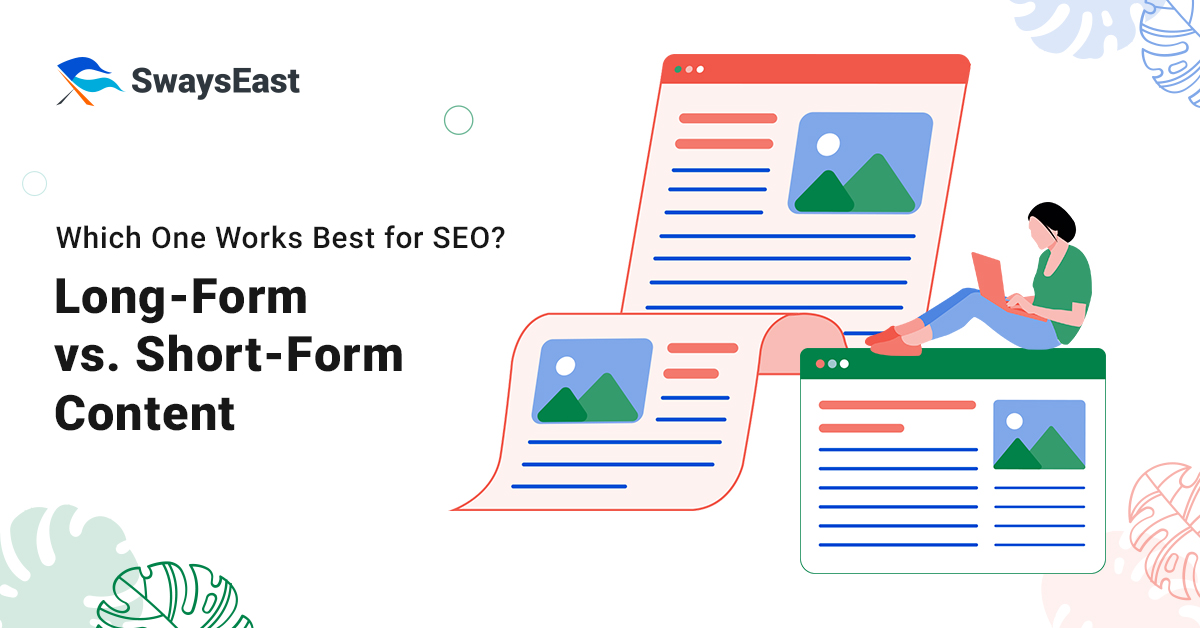When it comes to digital marketing and search engine optimization (SEO), content remains king. However, the debate over whether long-form or short-form content reigns supreme has been ongoing. Both have their merits and drawbacks, but how do you determine which is best for your SEO strategy? Let’s delve into the intricacies of each to understand their roles and effectiveness in boosting your online presence.
Understanding the Basics: Long-Form vs. Short-Form Content
Before deciding which type of content to invest in, it’s essential to understand the fundamental differences between long-form and short-form content.
Long-Form Content typically refers to articles and write-ups exceeding 1,200 words. This category includes in-depth pieces like white papers, ebooks, and comprehensive guides. These pieces aim to explore topics exhaustively, providing valuable insights and answering all possible questions a reader might have.
Short-Form Content, on the other hand, consists of pieces usually under 1,000 words. It includes blog posts, social media updates, and emails designed for quick consumption. These pieces are concise, delivering key messages swiftly to capture the reader’s attention without delving deep into details.
The Benefits of Long-Form Content
Long-form content is often hailed as the gold standard in the SEO world, and for good reason. Here’s why it might be the better choice:
- Comprehensive Coverage: Long-form content allows you to cover a topic in detail, which can establish your brand as an authority in your industry. By providing in-depth information, you can guide readers through their decision-making process, making it a powerful tool for lead generation.
- Higher Rankings and Backlinks: Studies, such as those by Ahrefs, suggest that longer articles tend to rank higher on search engines. They naturally attract more backlinks, as they contain more link-worthy information. This is crucial for SEO, as backlinks are a significant factor in search rankings.
- Increased Dwell Time: Users tend to spend more time on pages with long-form content, positively impacting metrics like average dwell time. Search engines interpret longer dwell times as indicators of quality content, which can enhance your site’s ranking potential. For more on user engagement metrics, see Search Engine Land’s guide.
- Social Media Shares: According to Semrush, longer articles often receive more social media shares, increasing exposure and potential for backlink acquisition.
- Establishing Authority: Regularly publishing long-form content with original data or insights can bolster your brand’s authority and credibility. This is especially true for niche topics where your expertise can shine.
The Advantages of Short-Form Content
While long-form content has its strengths, short-form content should not be overlooked in your SEO strategy. Here’s why:
- Speed and Efficiency: Short-form content is quicker and easier to produce, allowing you to maintain a steady flow of new material on your site. This can be particularly advantageous for keeping up with trending topics.
- Meeting Specific Search Queries: Sometimes, users are looking for quick answers rather than in-depth analysis. For such queries, short-form content is more effective and meets search intent better.
- Versatility in Marketing: Short-form content can be used across various platforms, from social media to email marketing. This can help you engage with different audience segments more effectively.
- Appeal to Short Attention Spans: In an era where users often skim content, short-form pieces can cater to those with limited time or interest, delivering the message concisely and efficiently.
When to Use Long-Form vs. Short-Form Content
Choosing between long-form and short-form content isn’t about picking one over the other but rather understanding when to use each effectively. Here are some scenarios to consider:
- Industry Reports and In-Depth Guides: If you aim to delve deep into a subject, showcase original research, or provide comprehensive insights, long-form content will serve you best.
- Quick Updates and Announcements: For timely news, updates, or engaging with your audience through social media or email, short-form content is more suitable.
- Target Audience and Search Intent: Analyze the needs and behaviors of your target audience. If they prefer detailed information, opt for long-form content. If they seek quick solutions, short-form is your go-to.
- Competitive Analysis: Look at what your competitors are doing. If the top-ranking pages for your target keywords are long form, you might need to create similar or better content.
Conclusion: A Balanced Approach
Ultimately, a successful SEO strategy will likely incorporate both long-form and short-form content, depending on the goals and circumstances. Striking a balance between the two ensures that you can cater to diverse audience needs, leverage the strengths of each content type, and stay competitive in the digital landscape. For a deeper dive into balancing content strategies, explore Search Engine Journal’s analysis.
Ready to build your influence? SwaysEast offers a suite of smart digital marketing tools to help brands create innovative solutions and experience their very own AI digital marketing success stories. Book a FREE APPOINTMENT today.

